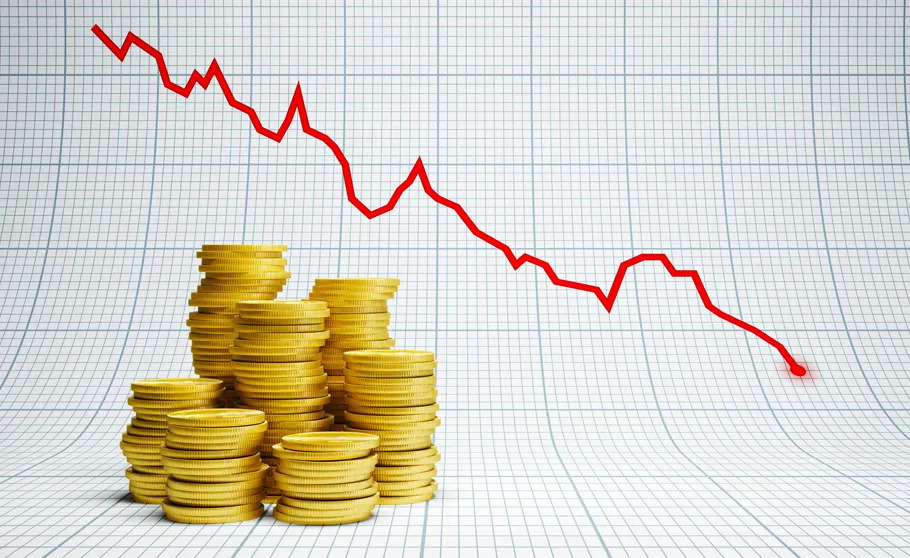Anatomy of a financial crisis
The irony of all this is that central banks can generate liquidity at no cost to them
The financial system is caught in a destructive vicious circle: on the one hand, falling asset prices are causing serious financial difficulties; on the other, these difficulties stimulate the sale of assets and the fall in prices. This problem, if it is not addressed, threatens to plunge the economy into a deep recession or even into a depression.
The current situation is the result of the bursting of the housing bubble, which has put an end to two decades of financial orgy fostered by a cocktail of factors.
In the first place, the economic recovery after the recession of 2001 was very fragile, due to the stagnation of wages and the weakness of the productive sector, due to the trade deficit and the overvaluation of the dollar. Fearing a relapse into recession, the Federal Reserve kept interest rates low for too long, triggering the housing bubble.
Second, greed and ultraliberal ideology went hand in hand to promote excessive risk-taking and obstruct regulation. The assumption of excessive risks was justified in the ungrounded belief that mathematical models could accurately describe economic reality and quantify uncertainty, which made unnecessary the usual precautions, which were now considered outdated.
Meanwhile, regulators were contemplating with arms crossed the emergence of toxic financial products, such as mortgages without entry or only interest.
Third, banks assumed the “create and distribute” loan model, in which banks grant loans, package them into insured bonds and sell these bonds to investors. Thanks to the management expenses, the banks, and their executives earned money simply by granting loans, which constituted a clear incentive for the increase of the granted loans without importing their quality since then they were sold to third parties.
Fourth, the financial system was increasingly dependent on cheap refinancing from the money markets, rather than relying on bank deposits.

Bank Loans
By becoming aware of the degree of folly in which the financial system had fallen, investors have embarked on a desperate race for liquidity and have put the guaranteed bonds on sale. This is causing huge losses and triggering requests for margin replenishment and downgrades, which drives more sales and leads to further credit contraction.
Regulatory policies have not only been unable to prevent the formation of the bubble but are now further intensifying their deflation. One of the reasons is that the rules of mark to market accounting force companies to assume losses when prices fall. A second reason is the rigidity of capital standards.
The application of mark-to-market rules in an environment of asset price volatility can create a vicious circle of accounting losses that further drive down prices and losses. At the same time, capital standards require companies to raise more capital when they suffer losses. This forces them to raise money in circumstances of lack of liquidity, which translates into sales of shares that cause the fall in asset prices.
Conservative analysts think that financial markets deserve punishment for their “sins” and that it will cleanse them. This vision is presented as the need to restore discipline in the market and maintain moral principles.
Interestingly, the point of view on the left is very similar. It is claimed that the “big shots” of Wall Street must be punished, that the prices of the assets must go down, that the banks must digest their losses by themselves, and that all the financial companies must be dropped except the most essential ones.
Both points of view are based on moral considerations, and both carry the risk of causing unnecessary harm. Past mistakes can not be undone. What can be done is to minimize costs and then work to reform the system and prevent them from repeating themselves.
This means that regulators should explore ways to relax capital standards and mark-to-market rules. In addition, the Fed should lower interest rates, and not just for the conventional purpose of stimulating spending. Low short-term rates are needed for long-term assets (including housing) to regain their attractiveness, propitiating demand and ending the destruction of asset prices.
The fear of an inflationary spiral of prices and salaries is out of place. The real threat is the deep recession.
The time has come for the Fed to make use of the credibility it has acquired. Interim reductions in emergency interest rates can be reversed when the situation stabilizes.
The Paulson plan for the purchase by the Government of toxic assets associated with mortgages is a good plan, as it will help to curb the fall in prices and therefore stabilize the markets. The problem is that few trusts that the Bush Administration will do the job honestly. In addition, it will be necessary to compensate taxpayers with the ownership of bank shares in exchange for the purchase by the Government of high-risk securities at prices higher than the current ones, something that conservatives reject.
The irony of all this is that central banks can generate liquidity at no cost to them. Normally the problem is to put an end to overproduction to avoid inflation. Today the problem lies in overcoming the political obstacles that oppose the so-called “rescue”. These are legitimate objections, but they run the risk of restricting the provision of liquidity and involuntarily impose the enormous costs of a deep recession.
For the moment, the Fed is protecting the banks and the network of Treasury agents, but not the rest of the financial system. This is perverse if one takes into account the way in which the Fed has stimulated in the past the expansion of the non-banking part of the financial system. Instead, the Fed should consider a liquidity auction mechanism that makes loans available to insurance companies and creditworthy companies.
The guiding principle should be that the Fed would auction funds at punitive prices, with fully collateralized loans. The objective would be to facilitate the recovery of companies in distress causing minimal disruption to the market and without costs for taxpayers.
Once the crisis has subsided, the regulators must get down to work to solve the problem of price bubbles, which is at the bottom of the whole matter. Currently, central banks can only control the bubbles by torpedoing the economy with upward revisions of interest rates. New flexible control mechanisms are required. One proposal would be to make reserves proportional to the volume of the assets, applying adjustable margin requirements to the financial assets. The problem of Wall Street bigwigs requires a reform of the regulations of the companies that limit the powers of the executives and increases the power of the shareholders. It is also necessary to move towards more progressive taxation, with lower tax cuts and higher increases. This must be accompanied by a labor reform that strengthens the unions, which exercise an important role of control over the excesses of executives. In addition, unions are necessary to ensure wage growth and so that the economy can boost demand without the need to rely on loans and asset inflation.
The political danger we face is for the authorities to stabilize the system but then not be able to carry out real reforms. That is the nature of the behavioral response to crises and the reason that the negative status quo can persist.



